WW1, a German View – the Last Years of Cavalry
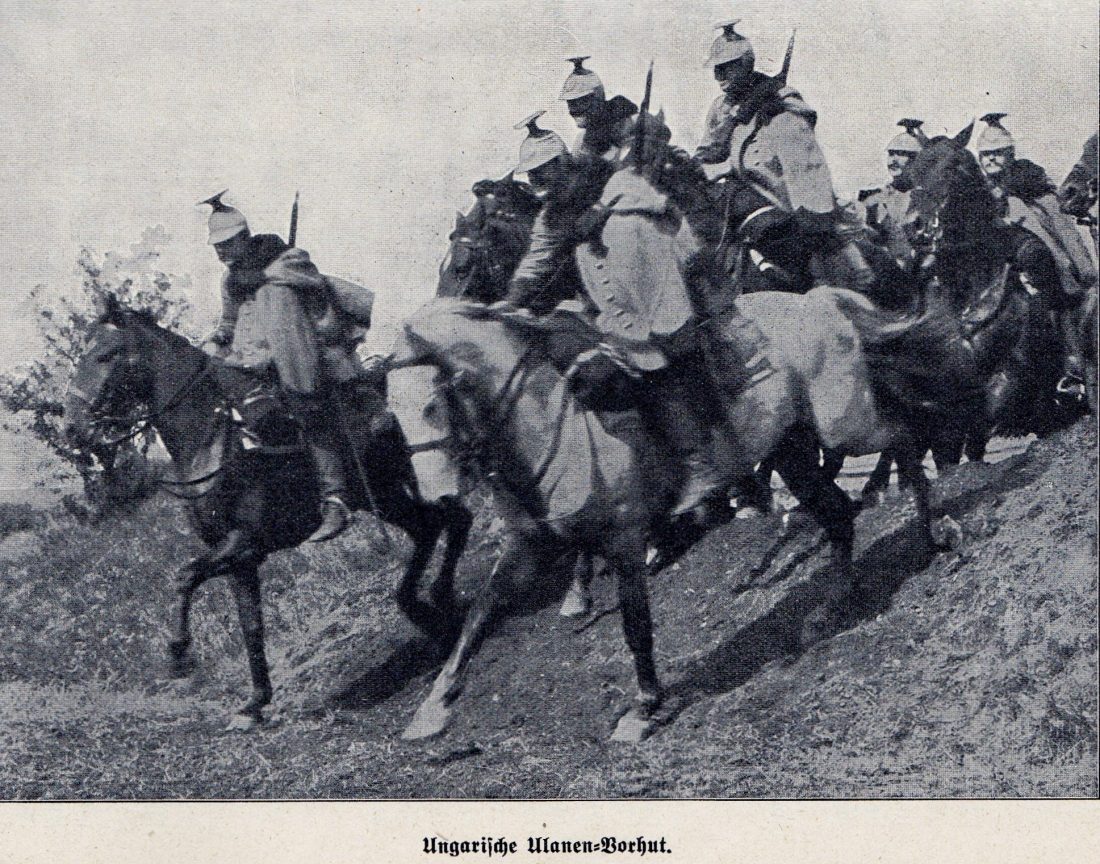 Austro-Hungarian Cavalry 1914
Austro-Hungarian Cavalry 1914
I’ve always been fascinated by how much the “feel” of the world of 1914 differed so dramatically from that of 1918. As one sees newsreels of 1914 – and in particular the computer-colourised versions one has seen recently, which gives an immediacy that black and white does not – one is struck by the absurd posturing of often-ludicrous figures in comic-opera uniforms. It is hard to believe that preposterous individuals such as Kaiser Wilhelm II, Emperor Franz-Josef or Czar Nicholas II – or indeed the pompous but short-sighted leaders of France and Great Britain – could ever have been in positions of power that allowed them to plunge the world into nightmare. 1918, a mere four years later, seems not only a time of brutal, disillusioned realism which had swept away the last vestiges of the 19th Century, but also one in which an explosion of technology had achieved changes which might otherwise might have taken decades. The World of 1914 “feels” different to ours of today, while that of 1918 was one which has myriad familiarities with our own.
 Magazine cover – German and Austro-Hungarian troops advancing shoulder-to-shoulder
Magazine cover – German and Austro-Hungarian troops advancing shoulder-to-shoulder
I was spurred to these reflections when I recently came across 1914/15 copies of a German illustrated magazine, detailing the progress of the war. Published in regular parts by a Bavarian publisher, Josef Habbel of Regensburg, Bavaria, the magazine was a German counterpart of several similar British month-by-month histories of the war, bound copies of which can sometimes be found in British second-hand bookshops. This “Illustrated History of the European War 1914/15” was edited by one Karl Aspern, about whom I have been unable so far to find out more than that he appears to have written histories of Turkey and Bulgaria in the same period. This magazine is particularly interesting in that it shows a German view of the early stages of the war when stalemate may have been developing on the Western Front, but when largely mobile warfare was the norm on the Eastern Front. The overall tone of the publication is crudely propagandist, and one suspects that the artists who provided the illustrations (there are fewer photographs than one would have expected) had never actually visited the front and were providing a idealised rather than realistic pictures. This said, it nevertheless offers interesting insights as to how Germans on the Home Front viewed – or were allowed to view – the war.
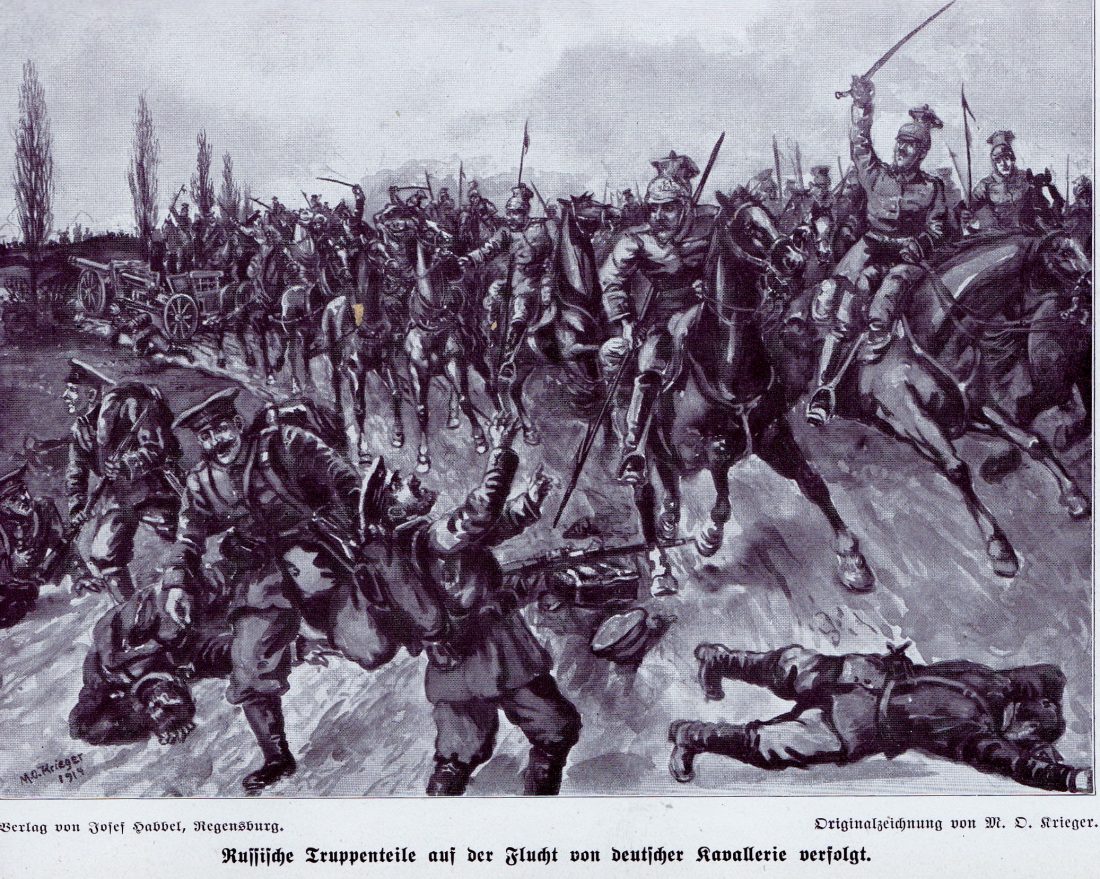 1914 – not 1814 – artist’s impression of German attack on Russian troops
1914 – not 1814 – artist’s impression of German attack on Russian troops
A notable aspect is the prominence given to cavalry operations. On the Western Front these were largely limited to the first weeks of the war, and were mainly restricted to a reconnaissance role, but cavalry was to remain significant factor throughout on the Eastern Front – and on into the Russian Civil War and the Soviet-Polish War of 1920. Here they played a more traditional cavalry role, taking advantage of their superior mobility to exploit breakthroughs, acting as mounted infantry (as was the original role of Dragoons) and on some occasions acting in a shock role, such as harrying retreating troops.
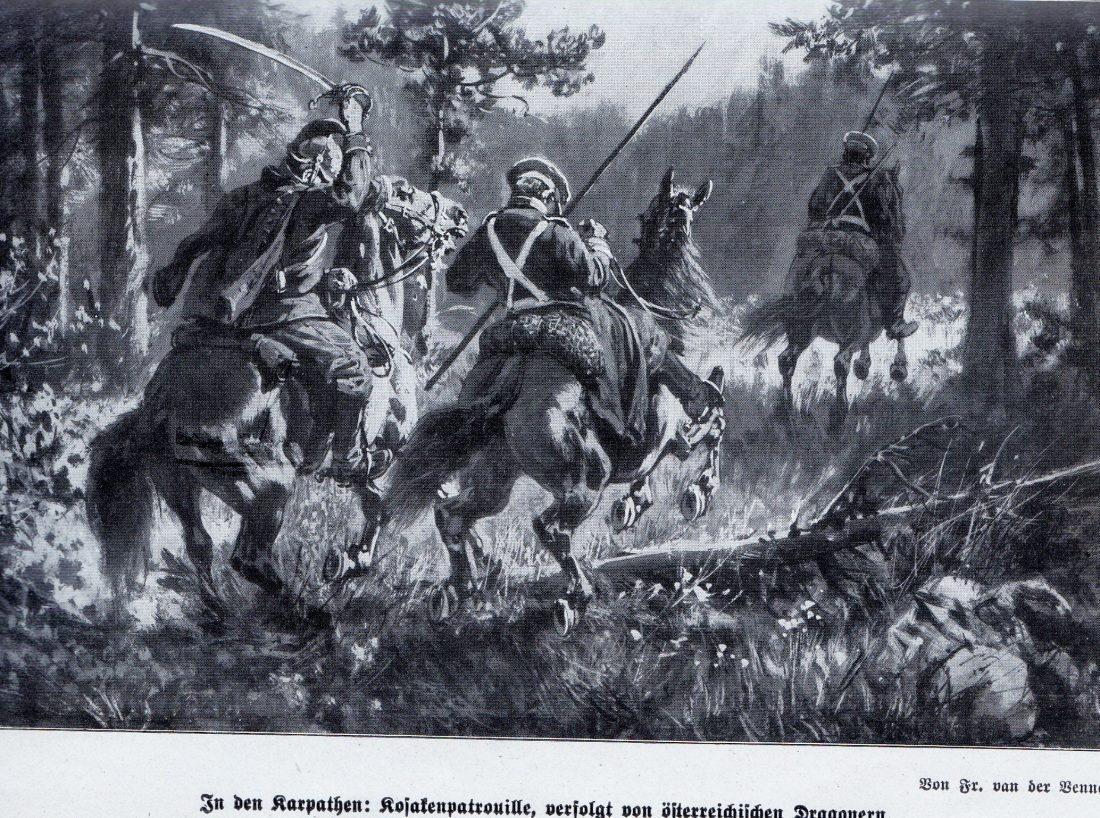 Austro-Hungarian cavalry driving off Cossacks in the Carpathians.
Austro-Hungarian cavalry driving off Cossacks in the Carpathians.
It could be a scene from “War and Peace” but Blitzkrieg is only a quarter-century away
Looking at the illustrations below – all from late 1914 and early 1915 – one gets the impression of looking at the death of “The Long 19th Century”.
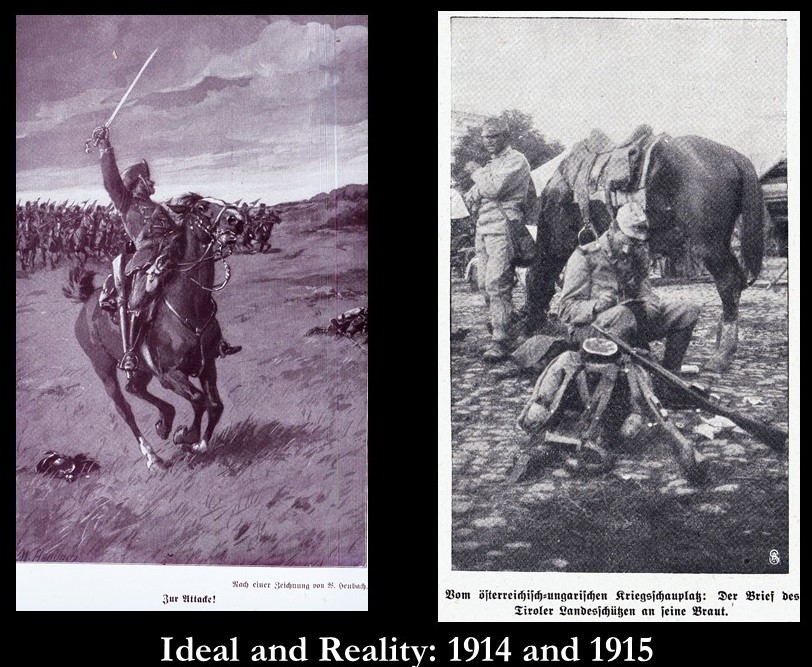
I hope you’ll find these images of interest. It is striking that in the illustrations shown below the focus is on offensive roles, and given the antiquated uniforms still in use many could easily be taken as referring to the Napoleonic or 1870 period. There is no hint of recognition here of the potential of mechanisation, yet by the end of the war – four years later – massed attacks by tanks, a new weapon, would be crucial in breaking the German lines on the Western Front. It’s hard to believe that only a quarter-century separated this last gasp of gorgeously uniformed horse cavalry from the Blitkrieg era. Even more remarkable is the thought that many young men who served in the units depicted in the illustrations below were themselves to lead German and Russian tank forces in Spain, in Mongolia and on the Eastern Front.
 Russian field-artillery in flight towards the fortress of Przemnsl
Russian field-artillery in flight towards the fortress of Przemnsl
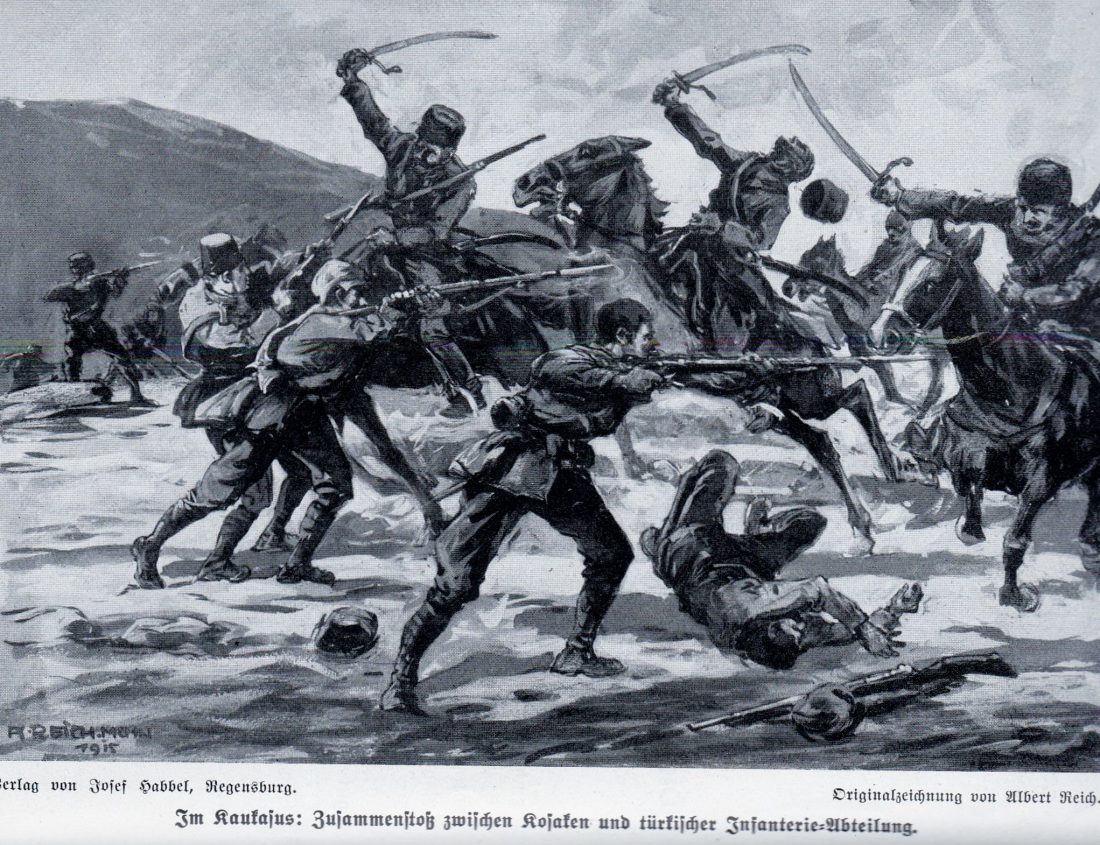 Turkish troops facing Russian Cossacks in the Caucuses
Turkish troops facing Russian Cossacks in the Caucuses
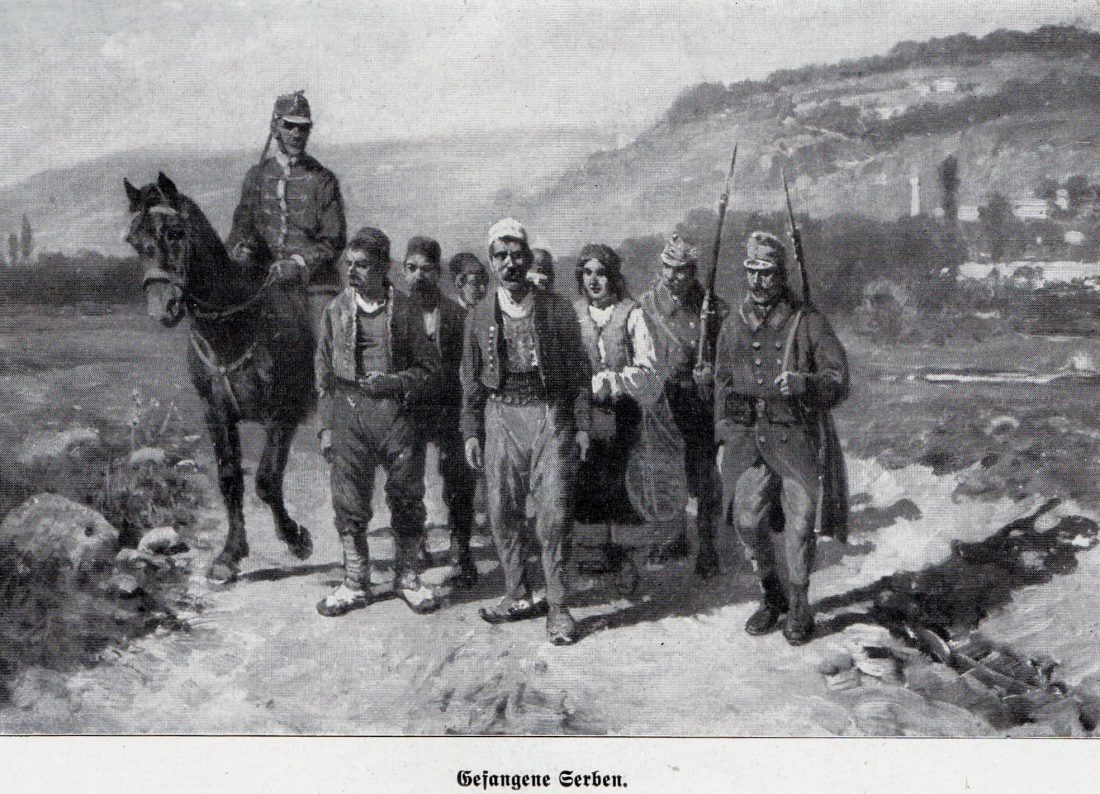 Serbian prisoners of the Austro-Hungarians – their dress is almost medieval
Serbian prisoners of the Austro-Hungarians – their dress is almost medieval
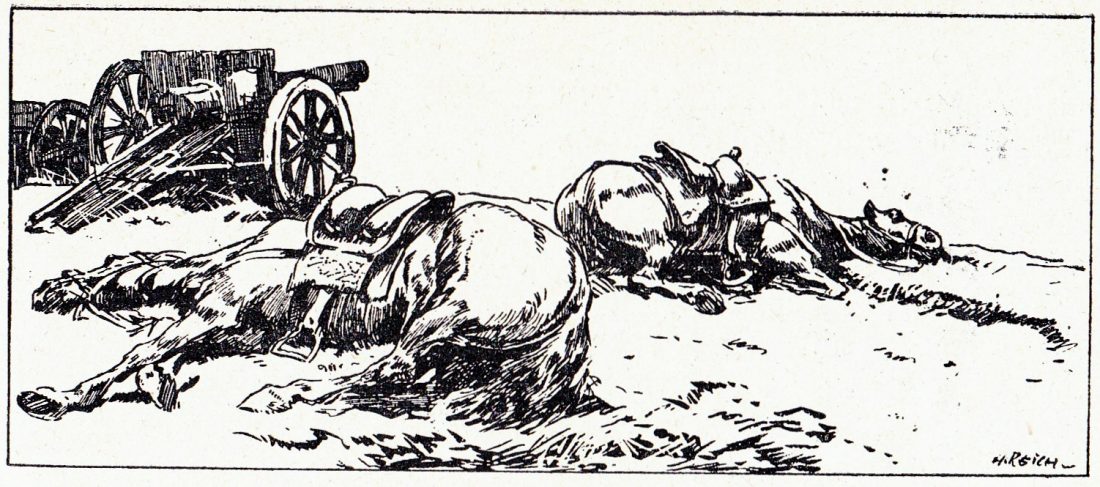 Innocent victims
Innocent victims
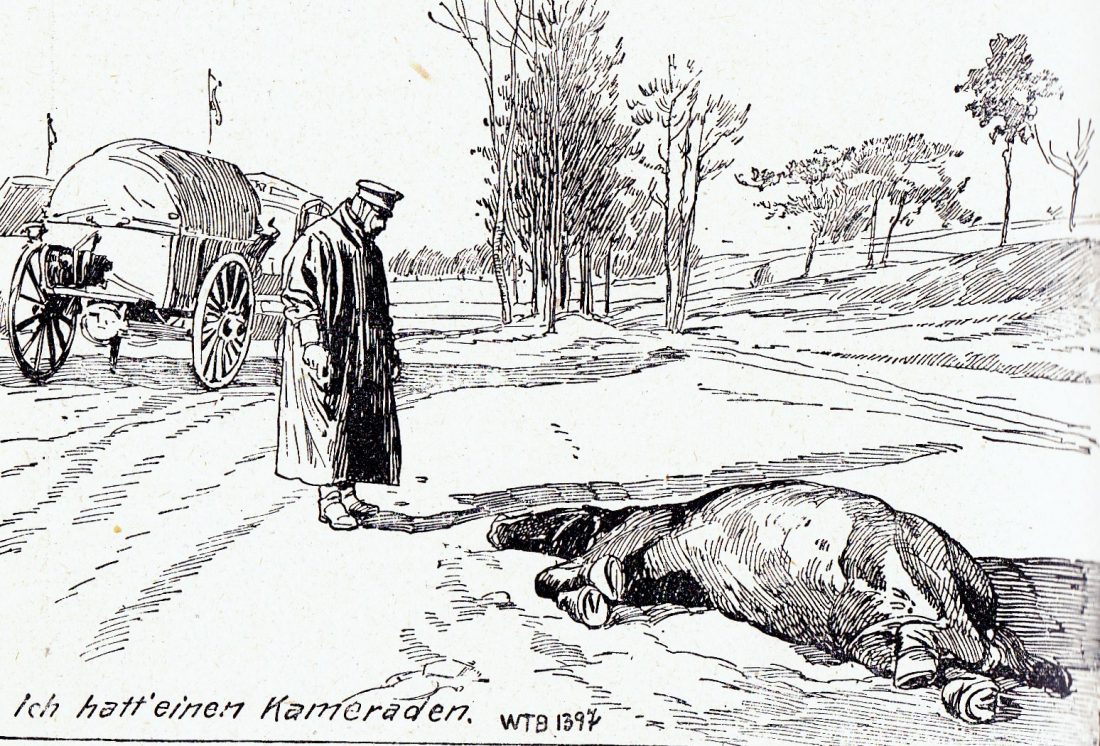 And the last drawing is the most poignant. The caption reads “Ich hatte eine Kameraden” (“I had a Comrade”) and refers to the very moving song still sung by German troops at the funerals of the fallen, including most recently men lost in Afghanistan, where modern Germans stood shoulder-to-shoulder with one-time enemies.
And the last drawing is the most poignant. The caption reads “Ich hatte eine Kameraden” (“I had a Comrade”) and refers to the very moving song still sung by German troops at the funerals of the fallen, including most recently men lost in Afghanistan, where modern Germans stood shoulder-to-shoulder with one-time enemies.
The latest Dawlish Chronicles novel: Britannia’s Rule
 1886: Captain Nicholas Dawlish, commanding a flotilla of the Royal Navy’s latest warships, is at Trinidad when news arrives of a volcanic eruption on a West Indian island. The situation is worsening and only decisive action can avert massive loss of life. He races there with his ships to render help. His enemy will be an angry mountain, vast in its malevolent power, a challenge that no naval officer has faced before.
1886: Captain Nicholas Dawlish, commanding a flotilla of the Royal Navy’s latest warships, is at Trinidad when news arrives of a volcanic eruption on a West Indian island. The situation is worsening and only decisive action can avert massive loss of life. He races there with his ships to render help. His enemy will be an angry mountain, vast in its malevolent power, a challenge that no naval officer has faced before.
But Dawlish’s contest with the volcano is just the prelude to a longer association with the island. Its sovereignty is split – a British Crown Colony in the west, and in the east an independent republic established seven decades earlier by self-emancipated slaves. When wrenched from France through war, both seemed glittering economic prizes. Now they are impoverished backwaters where resentment seethes and old grudges fester. For many, the existence of a ‘black republic’ is resented, an affront to be excised. In France, a man of limitless ambition, backed by powerful interests, sees the turmoil as an opportunity that could bring him to absolute power. And, if he succeeds, perhaps trigger war in Europe on a scale unseen since the fall of Napoleon.
Through this maelstrom, Nicholas Dawlish must navigate a skillful course. Political concerns complicate challenges that can only be resolved by ruthless guile and calculated use of force. Lacking direct support from the Royal Navy, Dawlish must fight some of the most vicious battles of his career with inadequate resources and unlikely – and unreliable – allies.
Available in Paperback and Kindle (also readable on smartphones and tablets via Kindle App).
Kindle Unlimited Subscribers can read it, or any of ten other Dawlish Chronicles, at no extra cost.
For more details and for ordering, click below:
For amazon.com For amazon.co.uk For amazon.com.au For amazon.ca
The Dawlish Chronicles – now up to eleven volumes, and with more still to come!
Click on the image below for details of the individual books
Six free short-stories are available for download to your Kindle or Smartphone. Access them by registering for the Dawlish Chronicles mailing list – just click on the banner below. It will update you on new books and provide other free stories at intervals.


